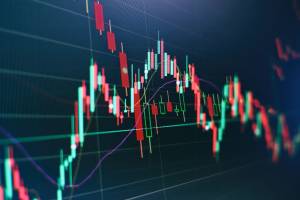The second quarter rather caught our eye, as we monitored how the global stage reacted to fraught geopolitical tensions and a mixed macroeconomic bag with signs of both resilience and fragility.
Global equities unwound slightly in May, as a freeze in US-China trade negotiations caused valuations to temporarily drop. However, the pullback was brief, thanks to both China and the US reviving trade talks.
More than a decade on from the 2008 global financial crisis, the US is enjoying its longest uninterrupted stretch of economic growth on record. Interestingly, this cycle now has lasted longer than The Beatles were together and is older than Instagram (thanks to Invesco’s Brian Levitt for this trivia).
Can this cycle last forever?
Of course, there are still challenges to navigate in the short-term. The momentum behind the phenomenal equity run of the past decade cannot be maintained forever. We all know that. The economy has already started to tire and any sign of a slowdown in economic and corporate earnings growth could cause financial markets to bite.
Record low levels of unemployment is finally driving wage growth higher in the US, increasing the disposable incomes of US consumers. But this comes at a higher cost for US companies, who are already battling to reverse weak productivity. The result is a slight erosion of profit margins which, if sustained, could weigh on earnings over time.
During the quarter, Central Banks made it even clearer that they weren’t going to tighten monetary policy and have indicated that they’re ready to loosen policy as needed to avoid choking economic growth. (The Fed has since made its first interest rate cut since the Great Recession).
Satisfied with this new rhetoric, markets rebounded, but the question is now whether the Fed is willing to cut interest rates enough to meet aggressive market expectations.
Central Banks step back
In our last Quarterly Report we noted how the Federal Reserve had eased back from its aggressive approach to rolling out its monetary policy programme.
In the second quarter, the Fed and European Central Bank distanced themselves further from their previously stubborn resolve, following a series of weaker macroeconomic data, stagnant inflation, and an uncertain trade outlook. Policy makers are now poised to unlock further monetary stimulus if the economy calls out for it.
The extraordinary period of economic expansion is hiding pockets of weakness, with world trade and manufacturing sectors in the doldrums. Yet these areas of weakness are so far just a dent in the wider momentum behind the US economy.
A tough balancing act
For the Fed, the priority is mitigating the risk of a recession and a further decline in the pace of inflation, with the PCI currently sitting at 1.8%. As ever, the Central Bank has a tough balancing act, as cutting interest rates too soon could cause the economy to overheat.
Markets expect the Fed to cut rates in its July meeting, and again before the end of 2019. Fixed income markets are currently pricing in a 75 basis point cut to interest rates over the next 12 months – although there may be an element of investor overconfidence in that outlook.
The move by Central Banks to distance themselves from their previous aggressive rhetoric has supported risky assets, such as equities and credit. Driven by the prospect of consumers and governments loosening purse strings, risky assets rallied along with traditional ‘safe havens’ like Developed Market Government Bonds, Gold and the Japanese yen.
Equities had another powerful ally in this quarter, with the European Central Bank’s (ECB) Mario Draghi also supporting looser monetary policy. Lacklustre economic growth and low inflation is likely to encourage the ECB to either maintain low interest rates, or introduce negative rates to encourage investment during a recession.
What low interest rates mean for investors
This lower interest rate environment has had wide implications for the financial markets over the last decade. It has contributed to higher levels of corporate borrowing and encouraged many investors into riskier assets in the search for a higher return.
Most Central Banks have limited tools at their disposal in a low-rate environment, when government borrowing costs are low. The temptation to engage in more active and expansionary fiscal policy will increase further.
Markets are not only pricing in Fed and ECB interest rate cuts this year. ECB quantitative easing is on the cards. This environment will support both risky assets and safe havens like Developed Market Government Bonds.
Essentially, markets are making a big bet that Central Banks will do what they can to keep this expansion alive. Time will tell if this is the right bet to make.
The will-they won’t-they of trade talks
The interesting question it whether it is the Fed or the markets that currently hold the power in this environment. We feel the Fed has been muscled into a rate cut by financial markets, and Trump isn’t too happy about the dynamic.
After reaching a temporary truce with Chinese President Xi Jinping at the G-20 summit in Japan, Trump declared that the US was winning the trade war. He couldn’t help adding that the Federal Reserve “has not been of help to us at all”.
“Despite that, we’re winning, and we’re winning big because we have created an economy that is second to none,” he added.
Yet there is still a lot of uncertainty as to how the two countries will proceed in negotiations from here. As the second quarter has shown us, it doesn’t take much to swing the pendulum the other way.
There are some key takeaways from the G-20 meeting that are worth remembering:
- The US said it would hold off indefinitely on introducing the tariffs it had planned, as long as:
- China committed to an additional $30 billion in imports
- Allowed US companies to continue to do business with China’s Huawei
- China signalled to Wall Street that it’s open for business, removing foreign ownership limits on financial firms a year ahead of schedule. Full control of securities companies, futures businesses and life insurers will be allowed by 2020.
The dispute is far from over.
China’s economic power is growing and its ambition to establish a global sphere of influence (through the Belt and Road Initiative) could disrupt the established geopolitical order, so far dominated by the US.
Irrespective of the final trade dispute outcome, the collision between the two superpowers is likely to lead to continuing economic and political tensions over the coming years.
The recent escalation of trade tensions shows that there is much more to Trump’s strategy than simply reining in Chinese mercantilism.
The US is engaged in a battle with China for economic and geopolitical dominance. It is a classic battle between an emerging power and the status quo. History doesn’t paint a reassuring picture of how these may be resolved.
China is emerging to challenge America’s global influence in a number of areas such as business, technology and capital markets. The dispute is made even more complicated because China and the US, and those who deal with them, are now interdependent. This interdependency could be a vulnerability or a weapon – depending on how they use it.
Interestingly, this power shift is likely to cause populist parties to reject international politics and policy-making further. Europe could see populism intensify, for example, as it battles against low economic growth, near-zero inflation and low interest rates.
June drives the quarter to growth
Overall, the second quarter was kind to a wide range of asset classes. This was thanks to a strong rebound in June. Developed and Emerging Market Equities ended the three months in green territory, even if the latter was impacted by trade spats during the quarter.
The notable laggards were China and major Asian markets (Hong Kong, Singapore, South Korea and Taiwan) in the emerging space and Japan in the developed arena – essentially countries that are seen to be directly linked to the slowdown fuelled by Chinese and US trade activity.
Commodities were the only asset class on our radar to post negative returns. These suffered from weakness in Industrial Metals and Energy, driven by lower growth and lower inflation expectations.
Bond and Equities have puzzled investors this year, with the S&P 500 reaching historical highs and US government bond yields record lows – which means the ‘price’ of bonds has reached a record high due to fixed income’s inverse dynamic between its price and yield.
Focusing on short-term sentiment, Equity markets are digging in their heels and refusing to get off the ride. Bonds on the other hand are pricing in the new trajectory of both the economy and the impact of the Fed’s (more cautious) pact.





